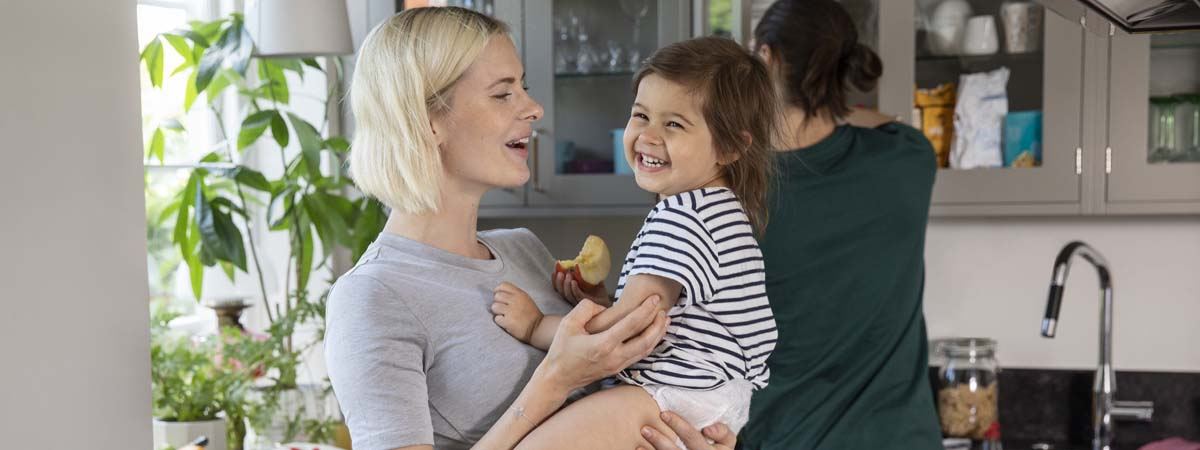What and how much a baby should eat per day?

Eventually the time comes to make those little tastes a little bigger until they finally become real portions. But how do you do that? When does a baby need to start eating solid food, what food should I give my 8-month-old baby and how much should a baby eat? We’ll explain it all here.
How often should an 8-month-old baby eat solid food?
Breast milk or formula can provide a great source of nutrition for a long time. But from six months onwards, you need to start adding nutrients and energy from other sources. Breast milk or formula still contain much of the nutrition a baby around 8 months old needs, so some (but not all) meals can still be through a breast or bottle if you wish. And of course, there are no hard and fast rules – each child tends to go at their own pace. Since the idea is to gradually increase the little tastes until they become real portions, it is quite natural for a baby who loves food to switch to regular food more quickly than a baby who is very attached to the breast or bottle. As a guide, when babies are around one year old, they need about two main meals and a few snacks a day. For breakfast and dinner, you can give breast milk, formula or porridge.
How much should a child eat?
There are no real rules on how much young children should eat at each meal as it varies greatly from child to child. Let your baby’s appetite guide you – you’ll know when they have had enough. For those who breastfeed and want to continue to do so, it is also fine to continue breastfeeding alongside solid food for as long as you and your baby want to, as there is no specific time when you have to stop breastfeeding.
Tips for a balanced diet for children
The food pyramid and food plate may seem a bit old-fashioned, but they can give you a good idea of what a child needs to eat to grow and thrive. The classic plate model clearly shows that children need a varied diet of carbohydrates (e.g. rice, porridge, potatoes, pasta, bread), proteins (e.g. eggs, dairy products, fish, meat, legumes and lentils) and vegetables. And fruit is great for dessert. Eating a varied diet is not only important for proper growth – it also plays a role in supporting the immune system. While this sounds fine in theory, when reality comes knocking you realise that children rarely eat everything you put in front of them. Sometimes they’ll only accept pasta and other times only fruit. But you know what, that’s actually fine too sometimes! Think of the plate model and a varied diet as what your child needs to eat over time – not necessarily at every meal. You should also make sure that you don’t feed your baby more than a total of three porridge-based meals per day. Find more tips and advice on your child’s food here.
Do you have a little one who is not particularly interested in food? You are not alone! If food refusal becomes severe and your child doesn’t gain weight as they should, you need to talk to your healthcare provider for help, but it doesn’t matter much if your child is a bit selective with food from time to time. Whilst it can be difficult, try not to compare your child to others and don’t stress too much, there are also some things you can do to make dinner a little more fun – for everyone.
Finger food is a fun way for your child to try new foods
Gradually, you can also think about starting to give food with a slightly coarser texture as your child needs to get used to chewing. Finger food in different bowls can be a fun way for your child to try new foods (softly cooked at first and with more texture as your child gets older). Self-feeding also develops fine motor skills and can make mealtimes a little easier for parents. In the beginning, your baby might spend most of their time moving the pieces around in their mouth and then spitting them out – but don’t give up! Next thing you know, the motor skills fall into place and your baby will figure out how to chew.
Healthy snacks for children
Need some tips on what to give your baby that’s reasonably quick and easy to whip up? Here are some ideas:
- Soft bread with liver pâté or hummus Vary the grains if you can – bread that also contains oats, for example, has less gluten in it than all-wheat bread, which is good for getting little stomachs used to gluten slowly.
- Half a banana – and it comes in a convenient package too
- Scrambled eggs
- Fresh cheese with mashed avocado
- Apple cut into pieces (cook until soft to start with)
- Carrot sticks (again, cook until soft to start with)
Please note that all information above is based on Swedish recommendations.


